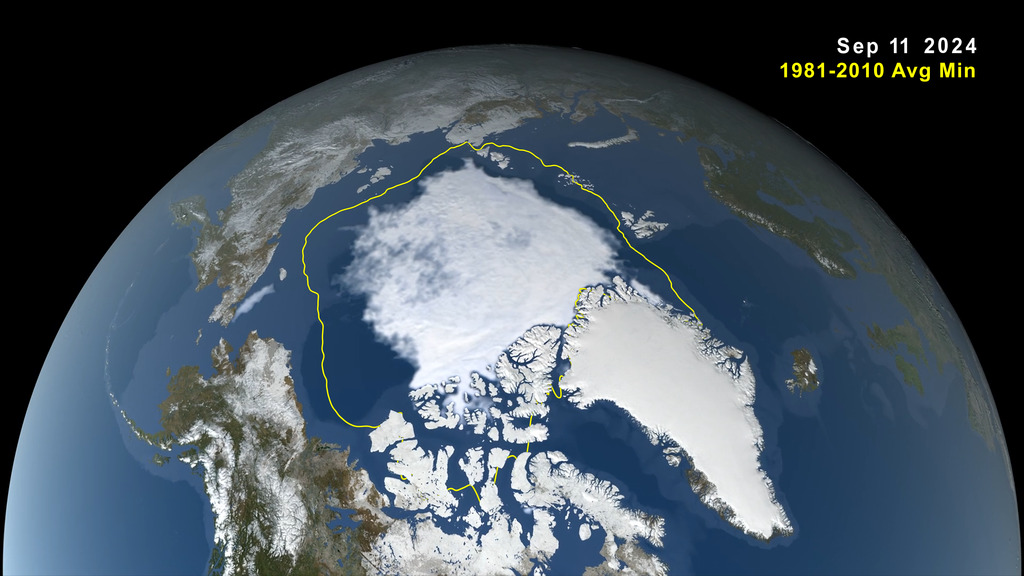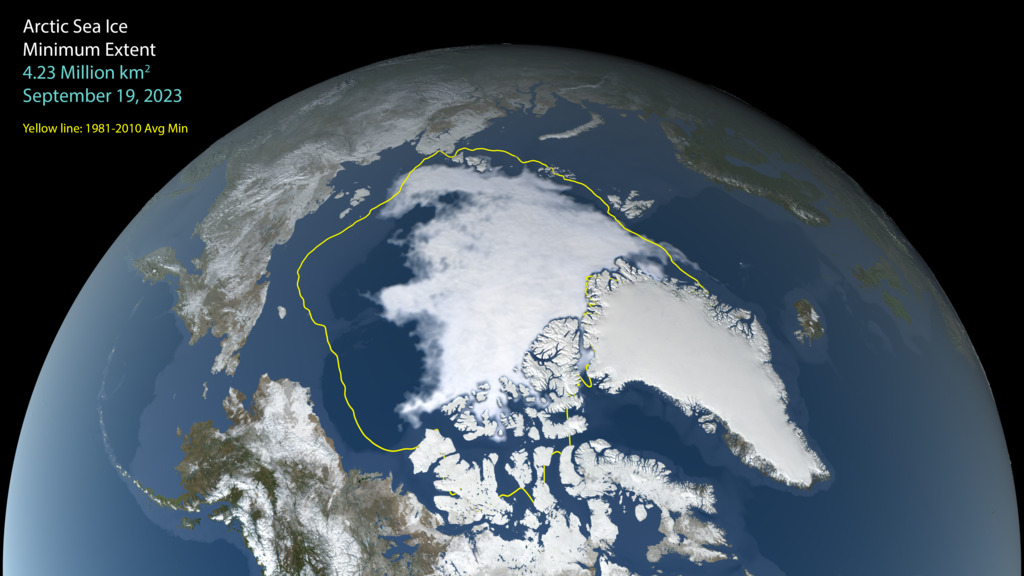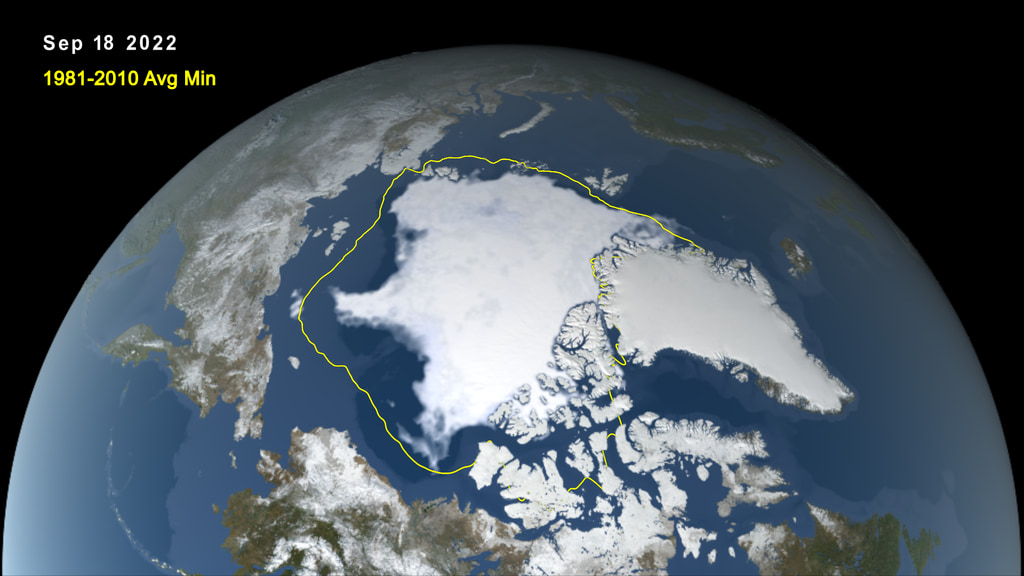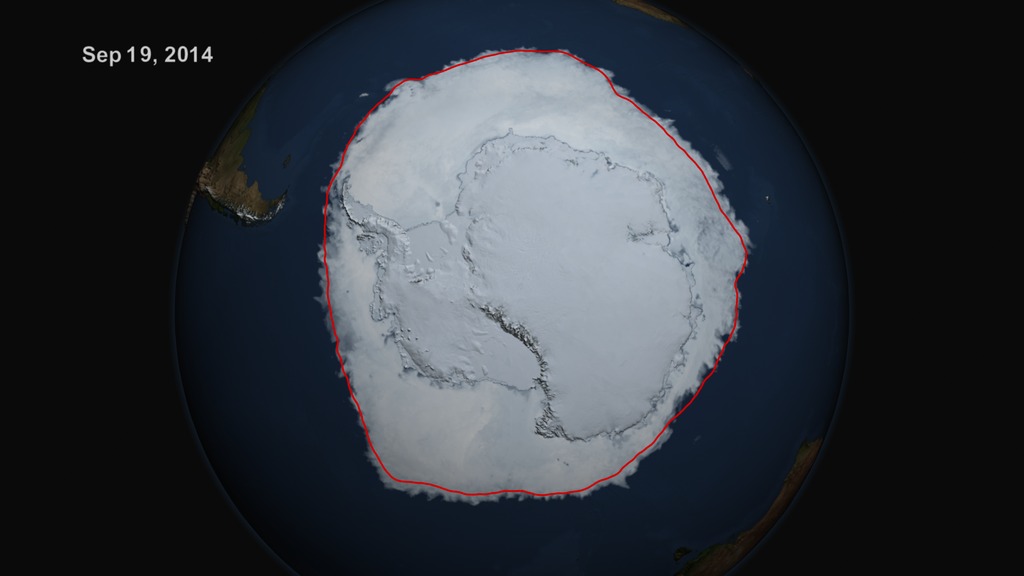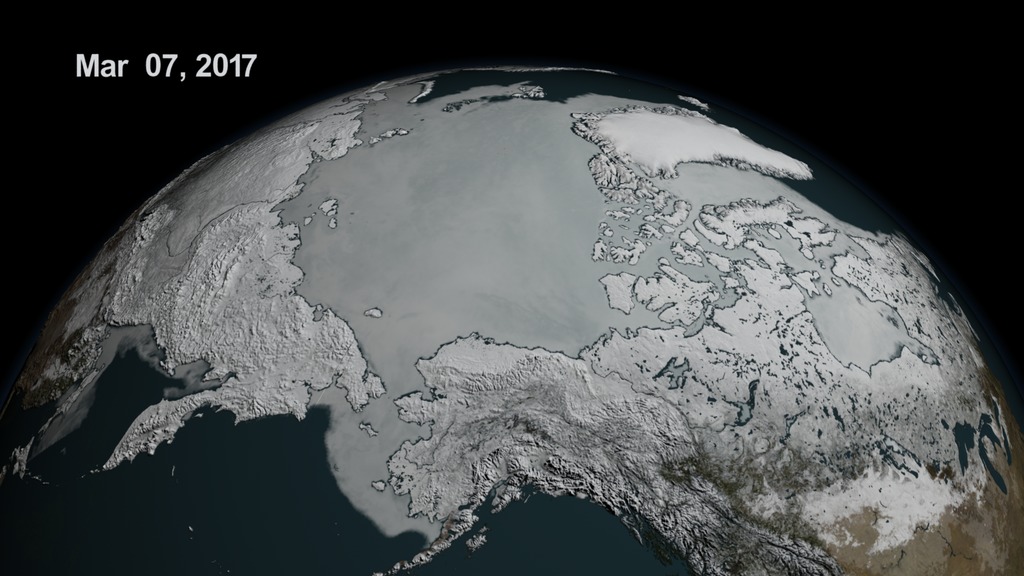A newer version of this visualization is available.
Minimum Antarctic Sea Ice 2017
This movie begins at the 2016 Antarctic maximum on August 31, 2016 and shows daily sea ice concentration until the Antarctic minimum on March 3, 2017. The 2017 minimum had only 2.1 million square kilometers of sea ice extent below the previous lowest minimum extext in the satellite record that occurred in 1997.
This year’s record low annual sea ice minimum of 2.11 million square kilometers was below the previous lowest minimum extent in the satellite record, which occurred in 1997. Antarctic sea ice saw an early maximum extent in 2016, followed by a very rapid loss of ice starting in early September. Since November, daily Antarctic sea ice extent has continuously been at its lowest levels in the satellite record. The ice loss slowed down in February.
“There’s a lot of year-to-year variability in both Arctic and Antarctic sea ice, but overall, until last year, the trends in the Antarctic for every single month were toward more sea ice,” said Claire Parkinson, a senior sea ice researcher at Goddard. “Last year was stunningly different, with prominent sea ice decreases in the Antarctic. To think that now the Antarctic sea ice extent is actually reaching a record minimum, that’s definitely of interest.”
The images shown here portray the sea ice as it was observed by the AMSR2 instrument onboard the Japanese Shizuku satellite. The opacity of the sea ice is derived from the AMSR2 sea ice concentration. The blueish white color of the sea ice is derived from the AMSR2 89 GHz brightness temperature. In some of the images. The Landsat Image Mosaic of Antarctica is shown over the continent.

This is the image from the 2016 Antarctic sea ice maximum on August 31, 2016.
Credits
Please give credit for this item to:
NASA's Scientific Visualization Studio
-
Visualizers
- Lori Perkins (NASA/GSFC)
- Cindy Starr (Global Science and Technology, Inc.)
-
Scientists
- Walt Meier (NASA/GSFC)
- Claire Parkinson (NASA/GSFC)
-
Sr. data analyst
- Robert Gersten (Wyle Information Systems)
-
Writer
- Maria-Jose Vinas Garcia (Telophase)
-
Technical support
- Laurence Schuler (ADNET Systems, Inc.)
- Ian Jones (ADNET Systems, Inc.)
-
Project support
- Leann Johnson (Global Science and Technology, Inc.)
- Joycelyn Thomson Jones (NASA/GSFC)
Release date
This page was originally published on Wednesday, March 22, 2017.
This page was last updated on Sunday, January 5, 2025 at 11:19 PM EST.
Missions
This page is related to the following missions:Series
This page can be found in the following series:Datasets used
-
BMNG (Blue Marble: Next Generation) [Terra and Aqua: MODIS]
ID: 508Credit: The Blue Marble data is courtesy of Reto Stockli (NASA/GSFC).
This dataset can be found at: http://earthobservatory.nasa.gov/Newsroom/BlueMarble/
See all pages that use this dataset -
10 km Daily Sea Ice Concentration [SHIZUKU (GCOM-W1): AMSR2]
ID: 795Credit: AMSR2 data courtesy of the Japan Aerospace Exploration Agency (JAXA).
See all pages that use this dataset -
10 km Daily 89 GHz Brightness Temperature [SHIZUKU (GCOM-W1): AMSR2]
ID: 796Credit: AMSR2 data courtesy of the Japan Aerospace Exploration Agency (JAXA).
See all pages that use this dataset
Note: While we identify the data sets used on this page, we do not store any further details, nor the data sets themselves on our site.
![Music: Crystal Light by Michael Holborn [PRS] and William Henries [PRS]Complete transcript available.](/vis/a010000/a012500/a012537/LARGE_MP4-12537_ArcticSeaIceMax_2017_large.00624_print.jpg)
